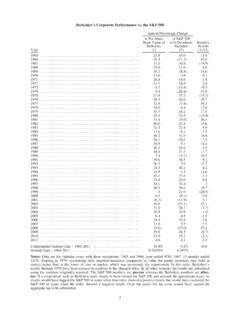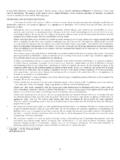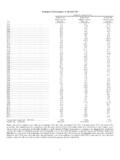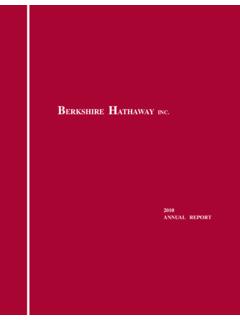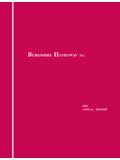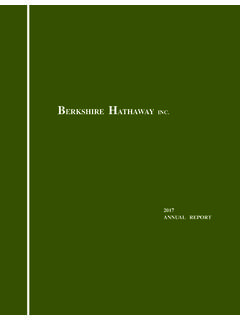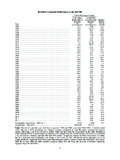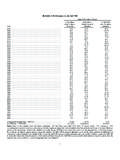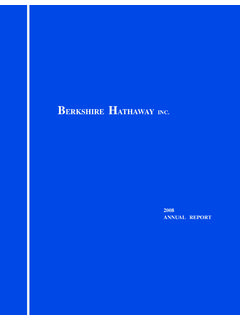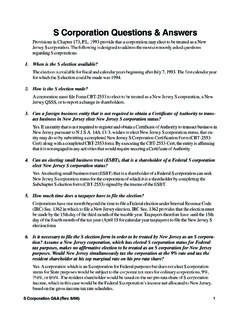Transcription of Berkshire’s Performance vs. the S&P 500 - Berkshire …
1 Berkshire s Performance vs. the S&P 500 Annual Percentage ChangeYearin Per-ShareBook Value ofBerkshirein Per-ShareMarket Value ofBerkshirein S&P 500with ( )( ) ( ) ( ) ( )( ) ( )( ) ( ) ( ) ( ) ( )( ) ( ) ( ) ( ) ( ) ( )( ) ( )( )( ) ( ) ( ) Annual Gain Gain ,981%1,598,284%11,355%Notes:Data are for calendar years with these exceptions: 1965 and 1966, year ended 9/30; 1967, 15 months ended 12/31. Starting in 1979,accounting rules required insurance companies to value the equity securities they hold at market rather than at the lower of cost or market, which waspreviously the requirement.
2 In this table, Berkshire s results through 1978 have been restated to conform to the changed rules. In all other respects,the results are calculated using the numbers originally reported. The S&P 500 numbers arepre-taxwhereas the Berkshire numbers such as Berkshire were simply to have owned the S&P 500 and accrued the appropriate taxes, its results would have lagged the S&P 500in years when that index showed a positive return, but would have exceeded the S&P 500 in years when the index showed a negative return. Over theyears, the tax costs would have caused the aggregate lag to be hathaway the shareholders of Berkshire hathaway Inc.
3 : Berkshire s gain in net worth during 2015 was $ billion, which increased the per-share book value ofboth our Class A and Class B stock by Over the last 51 years (that is, since present management took over),per-share book value has grown from $19 to $155,501, a rate of compounded annually.*During the first half of those years, Berkshire s net worth was roughly equal to the number that reallycounts: the intrinsic value of the business. The similarity of the two figures existed then because most of ourresources were deployed in marketable securities that were regularly revalued to their quoted prices (less the tax thatwould be incurred if they were to be sold).
4 In Wall Street parlance, our balance sheet was then in very large part marked to market. By the early 1990s, however, our focus had changed to the outright ownership of businesses, a shift thatdiminished the relevance of balance-sheet figures. That disconnect occurred because the accounting rules that applyto controlled companies are materially different from those used in valuing marketable securities. The carryingvalue of the losers we own is written down, but winners areneverrevalued ve had experience with both outcomes: I ve made some dumb purchases, and the amount I paid for theeconomic goodwill of those companies was later written off, a move that reduced Berkshire s book value.
5 We vealso had some winners a few of them very big but have not written those up by a time, this asymmetrical accounting treatment (with which we agree) necessarily widens the gapbetween intrinsic value and book value. Today, the large and growing unrecorded gains at our winners make itclear that Berkshire s intrinsic valuefarexceeds its book value. That s why we would be delighted to repurchaseour shares should they sell as low as 120% of book value. At that level, purchases would instantly and meaningfullyincrease per-share intrinsic value for Berkshire s continuing unrecorded increase in the value of our owned businesses explains why Berkshire s aggregate market-value gain tabulated on the facing page materially exceeds our book-value gain.
6 The two indicators varyerratically over short periods. Last year, for example, book-value Performance was superior. Over time, however,market-value gains should continue their historical tendency to exceed gains in book value.* All per-share figures used in this report apply to Berkshire s A shares. Figures for the B shares are 1/1500thofthose shown for Year at BerkshireCharlie Munger, Berkshire Vice Chairman and my partner, and I expect Berkshire snormalizedearningpower to increase every year. (Actualyear-to-year earnings, of course, will sometimes decline because of weaknessin the economy or, possibly, because of insurance mega-catastrophes.)
7 In some years the normalized gains willbe small; at other times they will be material. Last year was a good one. Here are the highlights: The most important development at Berkshire during 2015 was not financial, though it led to betterearnings. After a poor Performance in 2014, our BNSF railroad dramatically improved its service tocustomers last year. To attain that result, we invested about $ billion during the year in capitalexpenditures, a sum far and away the record for any American railroad and nearly three times our annualdepreciation charge. It was money well moves about 17% of America s intercity freight (measured by revenue ton-miles), whethertransported by rail, truck, air, water or pipeline.
8 In that respect, we are a strong number one among theseven large American railroads (two of which are Canadian-based), carrying 45% more ton-miles of freightthan our closest competitor. Consequently, our maintaining first-class service is not only vital to ourshippers welfare but also important to the smooth functioning of the most American railroads, 2015 was a disappointing year. Aggregate ton-miles fell, and earningsweakened as well. BNSF, however, maintained volume, and pre-tax income rose to a record $ billion*(a gain of $606 million from 2014). Matt Rose and Carl Ice, the managers of BNSF, have my thanks anddeserve yours.
9 BNSF is the largest of our Powerhouse Five, a group that also includes Berkshire hathaway Energy,Marmon, Lubrizol and IMC. Combined, these companies our five most profitable non-insurancebusinesses earned $ billion in 2015, an increase of $650 million over the five, only Berkshire hathaway Energy, then earning $393 million, was owned by us in , we purchased three of the other four on an all-cash basis. In acquiring BNSF, however, wepaid about 70% of the cost in cash and, for the remainder, issued Berkshire shares that increased thenumber outstanding by In other words, the $ billion gain in annual earnings delivered Berkshireby the five companies over the twelve-year span has been accompanied by only minor dilution.
10 Thatsatisfies our goal of not simply increasing earnings, but making sure we also increaseper-shareresults. Next year, I will be discussing the Powerhouse Six. The newcomer will be Precision Castparts Corp.( PCC ), a business that we purchased a month ago for more than $32 billion of cash. PCC fits perfectlyinto the Berkshire model and will substantially increase ournormalizedper-share earning CEO Mark Donegan, PCC has become the world s premier supplier of aerospace components (mostof them destined to be original equipment, though spares are important to the company as well).
